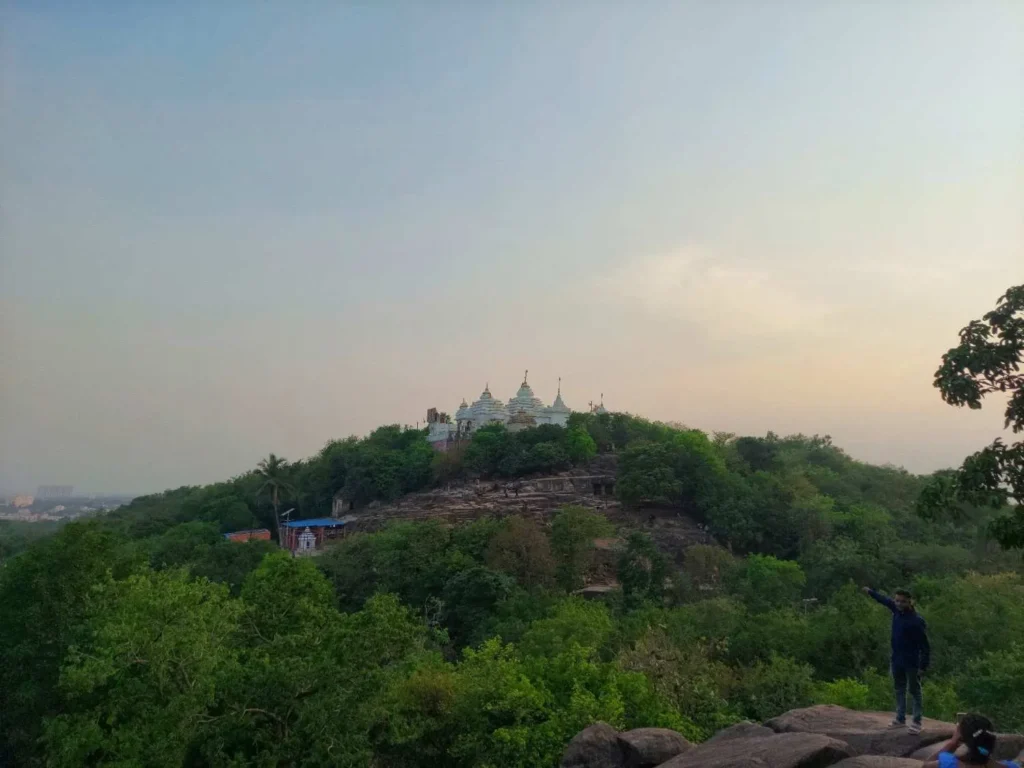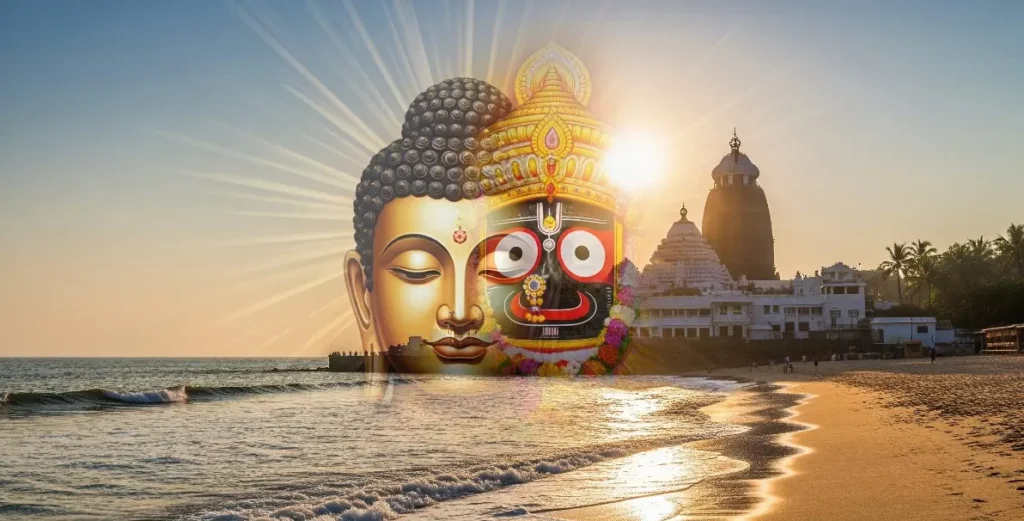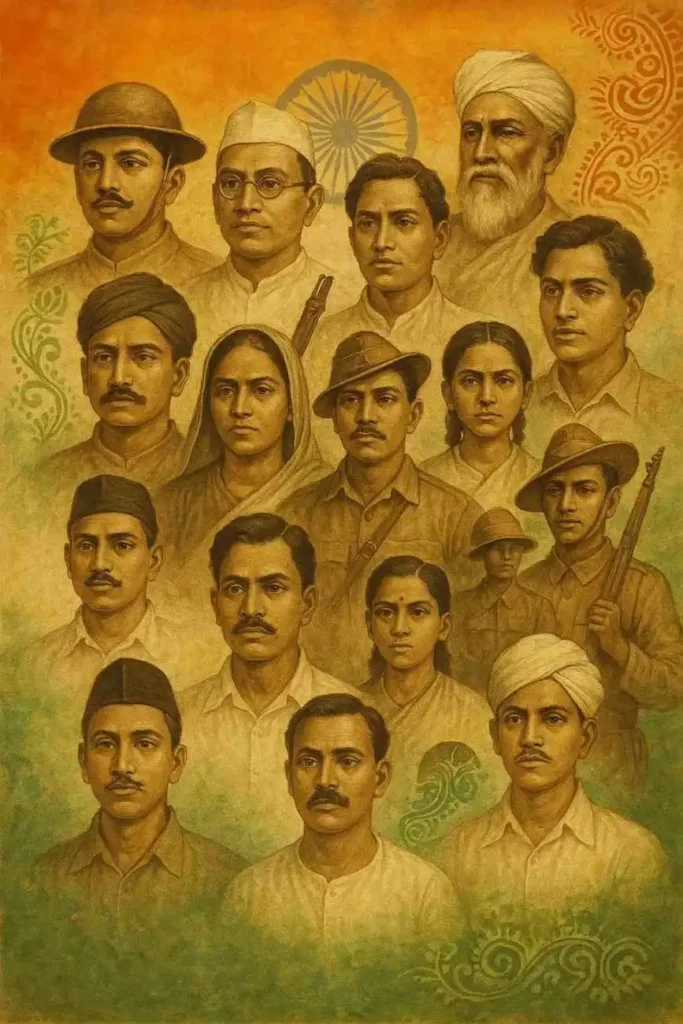
Introduction: What Makes Khandagiri a Must-Visit Heritage Spot?
Just a few kilometers away from the bustling city of Bhubaneswar, the Khandagiri Caves quietly rest on a hill, echoing stories carved over 2,000 years ago. Not only are these rock-cut shelters a marvel of early Indian architecture, but they also reflect the spiritual depth of Jainism in ancient Odisha.
Commissioned during the reign of King Kharavela in the 1st century BCE, Khandagiri—along with its twin hill, Udayagiri—was designed as a residential and meditative retreat for Jain ascetics. Whereas Udayagiri boasts artistic grandeur, Khandagiri stands out for its simplicity, symbolism, and spiritual purpose.Purpose of Khandagiri – A Sacred Space for Jain Monks
To begin with, the primary purpose of Khandagiri was to provide ascetic living spaces for Jain monks (sramanas). Unlike temples made for public worship, these caves were instead designed for private meditation, teaching, and spiritual practices.
Specifically, Khandagiri represents:
- A place of silence, discipline, and self-control.
- A haven for monks to live away from worldly distractions.
- A center where Jain doctrines were practiced and preserved.
Art & Architecture of Khandagiri – Simplicity with Symbolism
Although Udayagiri’s caves are larger and more decorative, Khandagiri’s architecture is humble yet symbolic. In contrast, the focus here was on function over form — a design that reflects Jain ideals of simplicity and renunciation.
Moreover, when examining Khandagiri architecture, several distinctive features stand out:
- Verandahs with square pillars that frame the entrances
- Single or double cells carved into rock for secluded monastic living
- Minimalist interiors created specifically for meditation and silence
- Motifs of lotuses, wheels, serpents, and Tirthankaras representing core Jain symbols
A Detailed Look at the Major Caves in Khandagiri
To better understand Khandagiri’s heritage, it is essential to explore the structure and spiritual importance of each prominent cave:
Tatowa Gumpha
These caves are decorated with birds and floral carvings. The name “Tatowa” refers to parrots, a symbol of vibrancy in Jain art. The interior features a simple chamber with cells and supporting pillars.
Ananta Gumpha
Markedly, this cave features serpent carvings, symbolizing cosmic infinity. It also houses Jain symbols such as wheels and lotuses, adding layers of sacred meaning.
Navamuni Gumpha
Significantly, this cave contains sculptures of nine Jain Tirthankaras. It holds importance for representing the spiritual lineage within Jain tradition.
Barabhuji Gumpha
This cave houses a rare 12-armed figure, most likely a Jain yakshi. The multi-limbed depiction suggests elements of Jain tantric symbolism.
Trusula Gumpha
Evidently named after trident motifs, this cave appears to use the trident as a protective symbol. Its overall design remains simple and austere.
Ambika Gumpha
This cave features Ambika, the protective goddess in Jain belief. Notably, it is one of the few female depictions in Jain cave art, highlighting the role of feminine divinity.
Dhyana Gumpha
As the name suggests, “Dhyana” means meditation. This quiet and undecorated cave was clearly intended for deep ascetic practices.
Furthermore, the remaining caves—though unnamed or partially eroded—together reveal a well-organized and functional monastic ecosystem rooted in spiritual discipline.People Also Ask – FAQs About Khandagiri
1. What is the significance of Khandagiri?
2. Who built the Khandagiri Caves?
3. How many caves are there in Khandagiri?
4. What is the architectural style of Khandagiri?
5. Is Khandagiri related to Buddhism?
How to Reach Khandagiri – Plan Your Visit
Here’s everything you need to know for a peaceful heritage trip:
- Location: Ideally located just 7 km from Bhubaneswar Railway Station, Odisha
- Nearest Airport: Conveniently connected via Biju Patnaik International Airport
- Opening Hours: Open daily from 9 AM to 6 PM, making it easy to plan your visit
- Best Time to Visit: For the most pleasant experience, visit between October and March
Why You Should Visit Khandagiri Today
Experience spiritual serenity amidst Odisha’s ancient rocks
Khandagiri is more than just a heritage spot — in fact, it’s a spiritual sanctuary. As you step into the caves, you immediately sense the discipline, silence, and devotion once embraced by monks who chose a life of simplicity and renunciation. Clearly, this ancient space invites introspection and quiet reflection.
Moreover, whether you’re a history lover, spiritual traveler, or art enthusiast, Khandagiri has something deeply moving to offer. Its raw simplicity stands in refreshing contrast to the grandeur of other ancient Indian sites, leaving visitors both inspired and mesmerized.Are you ready to explore Khandagiri in Bhubaneswar?
Don’t just scroll — plan a real journey into Odisha’s Jain heritage.
Visit Khandagiri with your family, school group, or fellow heritage lovers and take a step back into spiritual history.
Tag your photos with #KhandagiriChronicles


